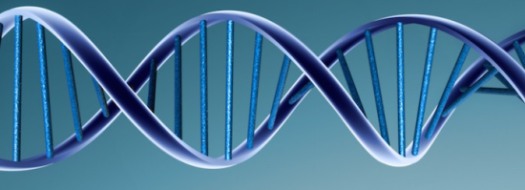Science has affirmed what I know intuitively—genetic changes happen throughout our lifetime, can affect our behavior and are passed from one generation to another.
In the last few decades, epigenetic research showed that epigenetic changes (molecular methyl groups attaching to our DNA) occurred during one’s lifetime. In the middle of writing Big Topics at Midnight, I discovered the work of Barbara McClintock exploring changes in a gene in response to environmental stress. In my book I noted, “Dr. McClintock had won the 1983 Nobel Prize for her discovery that stress to a corn plant caused genes to change their position on the chromosomes. She proved that genes, the genetic building blocks passed through the generations, were mutable and could be changed. If this change could happen due to stress, I presumed it could also happen due to a positive stimulus. It appeared to me that generational healing through changes in our DNA was scientifically possible.” *
When my ancestors began to share their stories with me, and then wanted them woven into my social change memoir, I knew experientially that transformation was possible not only in my own life but also genetically in my family line.
Often we trace physical characteristics back to our families: creative like Mother; stubborn like Grandfather; walk like Dad. But the similarity can also flow into emotional states: fear, anxiety, optimism. There are also behaviors to consider: control, integrity, obsessive tendencies.
In addition to family patterns, we also carry the imprint of the culture’s influence on our ancestors over the generations. For me that has included guilt around playing when there is work that needs to be done or dissatisfaction with my body. Culturally we also have the stain of sexism/patriarchy and racism/white supremacy woven into our DNA (both conscious and unconscious).
Trauma, nurture and emotional patterns of all sorts can be passed to us through our genetic make up at birth. However, genetic and epigenetic research both point to the fact that change is possible within our DNA itself and/or molecular attachments to our DNA.
Some of the characteristics I’ve inherited, I want to keep. Others I’d like to shift, such as generalized fear, feeling inadequate and unconscious use of excessive power and control sourced merely on society’s inaccurate and unjust bias toward those of us with white skin.
Every choice I make can have genetic/epigenetic consequences. When these choices and changes are sustained over a period of time, I believe they will support healthy genetic evolution.
I want that change to improve the integrity of my life, to be sure. But I also want to make changes in my life that will support generations that follow me.
Here is where my understanding boldly steps beyond scientific proof. I believe that these genetic changes move both directions in our family lines, affecting our ancestors and those descendants who are already born and those yet unborn. In addition, I believe that this shift can change the culture as well as individuals
Maybe one day science will catch up. Maybe not. Either way, I chose to believe this intuitive knowing that my efforts to shift entrenched, generational patterns—familial and societal—are part of my love and service to the world.
* Thurston, Nancy. Big Topics at Midnight (Portland, OR: Rosegate Press, 2012) pages 205 and 206.
